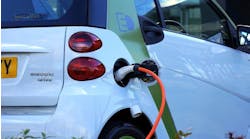Just over a year ago, the world was grappling with a neverending list of unknowns. Words like “unprecedented,” “pivot” and “new normal” were just beginning to take on new meaning and lockdowns were beginning to sweep the nation.
When Ratchet+Wrench last checked in with Mike Chung, the Auto Care Association’s director of market intelligence, many cities and states were just beginning to lift local restrictions only to face new spikes in COVID-19 cases and Chung predicted how shops could brace their operations for a second wave.
Now, as vaccines are distributed and cross-industry experts begin to talk post-pandemic trends, Chung offered his insight on some of the factors that could impact the aftermarket most in the coming months and how shop owners can prepare for potential boosts in business.
What will be the biggest bellwethers for aftermarket success in 2021?
Right now there are just too many variables and unknowns to make set predictions. When it comes to trend tracking, a lot of people picture it as looking into a crystal ball, but this year has really been more like a snow globe with all of these variables floating around and you’re not sure where they’re going to settle.
That being said, there are some elements that we’re tracking that have the power to make a real impact in the months ahead, COVID caseloads and vaccine efficacy being several of them.
We’re continuing to monitor caseloads and consider what trends we can pull from that. With a spike in cases after major events like Christmas and New Year, you can track the progression between rises in cases, then hospitalizations, then associated deaths. So, those caseloads can be a major bellwether because the more cases, the higher the possibility for additional restrictions which, of course, impacts the aftermarket as it once again changes people’s activities and driving habits.
Vaccine efficacy, including protection against the new strains that are being discovered, is also going to tie into that. As more vaccines get distributed and we hopefully achieve herd immunity, that will tie in with the impact of those restrictions and activities and people's driving habits as well.
And those factors can also directly impact vehicle miles traveled (VMT) which is going to be another major indicator. If we’re picturing a move towards post-pandemic life where vaccines are available, case loads are at a steady state and there’s less of a need for restrictions, activity’s likely going to open up and more people could be back on the road.
We saw VMT decrease by nearly 50% last April and 13% for the year in 2020 versus 2019, but recent industry surveys are finding that many consumers expect to increase their driving relative to pre-pandemic levels in the near future.That could be a great sign for the aftermarket, but it opens up a new slate of questions.
What are those questions to consider when it comes to VMT?
If people are going to drive more than they did pre-pandemic, that’s great, but will that actually become a reality? Say I’m someone who’s so tired of being at home this past year that I start making plans to go on a cross-country road trip or fly off to go on a safari in Africa when things let up. Will I actually go? Only time will tell. You also have to think about the type of miles being driven. Recent data has shown that through this last year, essential workers have continued to drive while many essential workers have not, so instead of considering VMT in general, you have to start thinking who is doing the driving? And what do their vehicles look like from an age and mileage perspective? New studies are finding that the average age of vehicles is on the rise and that consumers are delaying maintenance through the pandemic. Are those older vehicles with delayed maintenance owned by essential or nonessential workers? Those are all considerations that can have an impact.
As the dust continues to settle, what can shop owners do to prepare for these post-pandemic conditions?
If I could give one piece of advice it’s to be prepared for a potential influx of customers as things start to open up more. Customers may experience enough of a decrease in their anxiety that they begin participating in activities and driving more and maybe they’ll feel comfortable enough to start visiting the repair shop again (rather than delaying maintenance), but it’s not likely that they’ll have completely eliminated that anxiety altogether. Shops have to continue to foster an environment where customers can feel safe so that’s something to keep top of mind as well as the implications for staffing, ways to make reservations, customer communication and setting expectations for your hours, requirements for safe social distancing, wearing a mask, etc.
The idea is that this situation is more of a dimmer switch, not a light switch. The process of opening things up isn’t going to be a sudden on and off, so maintaining consistency in those shop policies to keep customers feeling safe and minimizing anxiety will go a long way.



